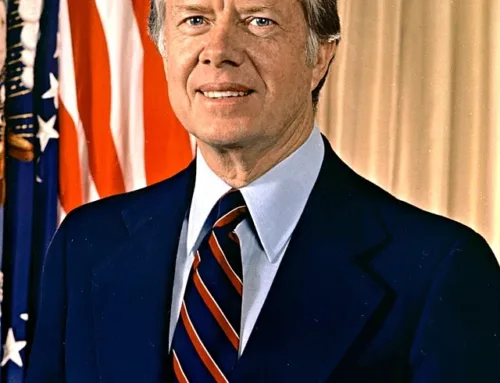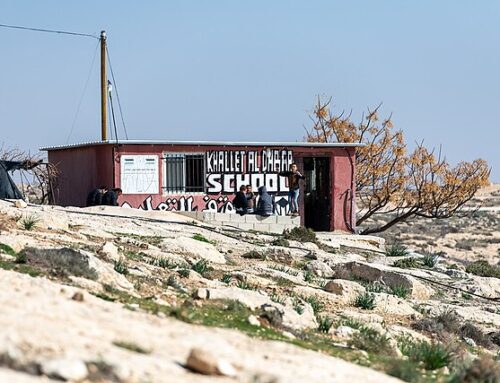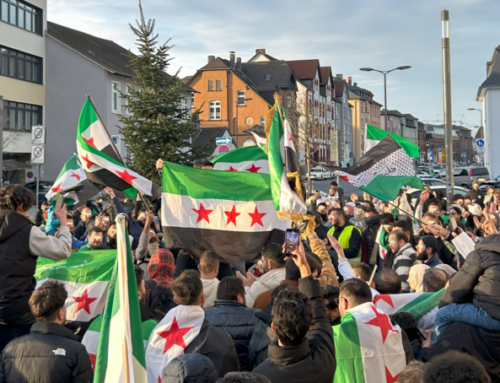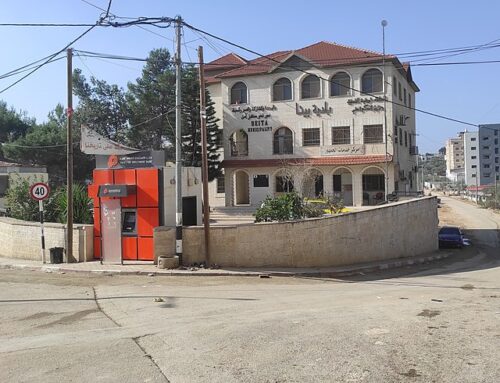[Click here for previous segments]
Part IV: Hebron
The highpoint and nadir of our time in Israel was definitely the eye-opening day we spent in Hebron, the most populous city in the West Bank, and the only one with settlers in the middle of the city. If you’re not a settler, the only way to get into downtown Hebron is on a roundabout, twisting and turning road. Our taxi got lost, but Kathy found the way. She has spent much time in Hebron as a member of an NGO that seeks, non-violently, to interpose itself between the IDF and the city’s residents, and document the daily violence exacted on Palestinians in Hebron, and we were staying at the NGO’s apartment.
We arrived at their apartment, at the end of a street that has been barricaded and surrounded by barbed wire by settlers, blocking access to Hebron’s main thoroughfare, Shuhada Street. It is near what used to be the central poultry market of Hebron. Most of the dealers, save one, have left, but at least one brave rooster remained to wake me up (and I hoped, a few of the settlers on the other side of the barbed wire wall) around 3 AM.
We met Dauod, an Englishman married to a local woman. He tells us of how his wife’s family land is under assault from spurious archeological research conducted by the Israel Department of Antiquities, keeping her family from using their land, which is adjacent to a settlement. “There have been digs on this land since the 1950s—it’s been excavated. There is no need for a new dig here. This is what archeological experts in Tel Aviv have told me. It is archeological harassment, intended to keep it from its proper owners.”
He is talking to Salma, who owns the adjacent apartment, and offers us a cup of tea. She is a schoolteacher. She had the front door of her house riveted shut by Israeli troops after her house was used in a demonstration. She has no faith in the PA or any separation of an Israeli and Palestinian state. “What’s the point of a Palestinian state? If the Israelis agree to it, it won’t be worth having, a small demilitarized rump of a state that Israel will be able to invade on some manufactured pretext whenever they choose. We want equality, and not a paltry handout.” Her sentiments were extremely common among Palestinians on the West Bank. “Don’t tell me, with settlers all about me, that somehow I don’t have the right to live wherever I want to in Palestine.”
We meet Ahmed, an older man whose house has been twice destroyed by the IDF, and twice rebuilt by friends and supporters because of its proximity to settlers. “Location, location, location” is his great curse, and that of all Hebronites. He is a genial man, smoking his cigarette, drinking his tea, holding no grudges, saying all he wants is peace.
Hisham, a left-wing Palestinian journalist and human rights activist came by to provide a tour. We went up to the roof of the apartment, to look at Shuhada Street. Hisham explained how bit by bit, by spurious legal documents and IDF collusion, the settlers took over parcel after parcel of Shuhada Street. “First Palestinians were denied the right to drive on the street. Then they weren’t allowed to walk on it.” An IDF soldier, patrolling the street, tells us to get off the roof. “And now, you see, we can’t even look at it.”
Settler control of the street completely disrupts downtown Hebron, with many locations inaccessible to Palestinians, and can make trips from contiguous parts of Hebron under Palestinian control into prolonged and roundabout journeys, with passage through numerous checkpoints. “I know people who live 500 meters apart who need to drive 20 kilometers to pay each other a visit.” We walk through the shuk—half the stalls are empty; the others are badly hurting for business. The goal of the settlers is to make downtown Hebron uninhabitable for Palestinians, and make them leave through attrition. The goal of the Palestinians is not to be intimidated. Neither side is budging. Hisham shows us where the settlers have blocked and closed the storm drains, ensuring that every time it rains hard, the shopkeeper’s stalls flood. Every Saturday the settlers, accompanied by soldiers, walk through the old city, sometimes looking for fragile things to break. He tells us tales of the methods settlers use to acquire land titles, and the many legal and extra-legal means they have devised to intimidate Hebronites.
We walk through two checkpoints and arrive at the most famous building in Hebron, the ancient cave of the patriarch and matriarchs—Abraham, Isaac , and Jacob, and Sarah, Leah and Rebecca. (Rachel is buried separately in Bethlehem, her tomb is near the separation fence, and largely inaccessible.) The Hebron cave has a tangled history, which Hisham quickly explains. There was a building from Herodian times, presumably a Jewish shrine of some sort, and then it became a church and then a mosque, and most of the structure dates from the Mameluke period. During the time it was a mosque, Jewish worship was not usually permitted; but Hisham adds, Jews always were allowed to pray outside the structure; as if to make his point, we see two Jewish men doing just that as we pass.
And then in 1929 came the pogrom in Hebron, which saw an end to Jewish population in the area until 1967. Jews returned after 1967, and made up for their absence, quite literally, with a vengeance. It’s not a terribly edifying history, and I think, if I had my druthers (see Genesis 23:3), I’d give it back to the Hittites.
The cave is now divided into a mosque and a synagogue, and to gain entrance into the mosque, the larger and far more impressive part of the structure, Michael and I have to deny that we are Jewish. Hisham says that the Muslim authorities sometimes check American passports to keep out Jews, but they are unsystematic in how they go about this—people with Jewish-sounding first names, like David, are sometimes not allowed entrance, though I figure that Peter should get me through. In the end, the guards didn’t ask any questions, or ask to see any identification.
The mosque is beautiful, a graceful Mameluke building with prayer rugs. Several of the beautiful monuments to the patriarchs and matriarchs are in between the Jewish and Muslim sections, and are inaccessible to everyone. Beneath the floor of the cave is where, if anywhere, there are actual bodies. Almost no one has access to the lower area. Hisham says one of the last people to enter was Moshe Dayan, just after the Six Day War, who came to the building and demanded entrance from the Muslim religious authorities, who complied. We speculate on whether, as was his wont, he took home a souvenir.
The key event in the recent history of the cave, and in the recent history of Hebron, is Baruch Goldstein’s murder of 29 Muslim worshipers in the mosque in 1994. Hisham shows us some of the patched-up bullet holes. It was only after this massacre that the mosque was divided into permanent Muslim and Jewish sections. Hisham complains, as did almost everyone we met in Hebron, that with the tightening of restrictions and heightened presence of the IDF after the massacre, the only ones who paid any penalty for Goldstein’s acts were Palestinians. As we leave, Michael notices that a barrier on a street in front of the cave that he had seen on a previous trip to Hebron had been removed. Previously, it had divided the main street, with signs indicating that Palestinians should walk on one side and Jews on the other. “Yes,” Hisham, says, “the Israelis took it down. Too much of an apartheid photo-op, not that you needed the wall or the signs for apartheid in Hebron.“
The next day, Michael and I reclaimed our Jewish identities and visited the Jewish side of the cave, which is subdivided into a number of little study and prayer centers, disrupting the graceful flow of the original design. We didn’t linger. In all, the two most unpleasant places I saw on my trip were the Temple Mount/Noble Sanctuary and the Hebron cave. My strongest memory of the former were a handful of Muslim women chanting, really shouting, “allah-u-akbar” at a group of Orthodox Jewish men. All excessive respect to sacred space, I think, is a form of idolatry. Either God is everywhere or nowhere.
That evening Hisham takes us to meet his wife and children at a very nice restaurant in Hebron, in a business district away from the city center. It’s called Abu Mazen, its name unconnected to the nom de guerre of the current PA leader. Hisham likes the restaurant a lot more than the person. “There’s no point in trying to obtain an independent Palestinian state. The only people in favor of it are hacks and toadies of the PA, who would use sovereignty just as another patronage cow. Of all the money the PA gets from tax revenue and foreign governments half goes to the top 3,000 PA employees, while the other 100,000 split the other half. The only fair way forward is a single state, for Jews and Palestinians both, in all of historic Palestine.” As to who wins the upcoming Israeli elections, he couldn’t care less. “A divorce between Israel and Palestine, a marriage, both at the same time, I don’t really care at this point. I expect nothing from Israel. All I know that I am fighting for Palestinian equality and the end of the occupation in every way I can.”
Hisham has a wicked sense of humor. He tells us a series of Khallili jokes—Hebron in Arabic is al-Khalil. Khallilies, or so they say in other West Bank cities, are slow of speech and slow of mind. There’s the Khallili who parachutes out of an airplane, and is told to open the chute after he counts ten. “Onnnnne, Twwwwwo, Thrrrrrrrre, Fourrrrrrrr.” And after the ambulance comes for him after he hits the ground, his parachute unopened, “Eigggggght, Ninnnnnnne.” And inevitable jokes about Hebronites befuddled by electric sockets and screwing in lightbulbs. His wife, a proper Muslim woman who took several earlier, slightly off-color jokes in stride, objects to the jokey insinuations about her home town. “Tell them some jokes about people from Ramallah or Nablus.” She is a high-school Arabic teacher. She thinks her application to become a principal has been stalled because the PA doesn’t care for her husband’s politics.
The next morning, Michael and I accompany a team of international observers on one of their daily tasks, watching and documenting elementary and junior high school aged students walking to school. The school is adjacent to the Jewish entrance to the cave and other settler buildings and has long been a flashpoint for trouble. The students have to walk through a checkpoint; some are stopped and asked to show their papers by soldiers. The soldiers have brought a large armored personnel carrier, with a large skunk water cannon on top (capable of shooting a crowd-dispersing foul-smelling liquid), to the checkpoint. It is tense from the beginning—the usual schoolboy and schoolgirl banter evaporating as they pass by the stern gaze of the soldiers. And then, about half an hour in, on the other side of the checkpoint and fence, we hear our first teargas canister, the first of about six in all, and several other loud sounds, which we are later told are stun grenades. The teachers try to herd the students into the school building, but a large crowd of boys remain in the area of the checkpoint, including some inveterate hooky players who have come to the checkpoint for some action. Soon the rocks start flying, and Michael and I leave the area. We are told later than the incident was probably started by someone throwing a rock on the other side of the barrier, and was over rather quickly—all in all, one of the calmer days in recent weeks. What do you learn when you go to school in a war zone?
I decided that Hebron has a way of cutting through all of the messy complications of the Israel and Palestine morass. Perhaps it all comes down to Shuhada Street, a gravitational black hole that forces the rest of the West Bank and Israel to revolve around it. Here’s the way it is: 1) the settlers will never voluntarily leave Hebron, and 2) if the settlers don’t leave Hebron, there will never be a Palestinian state. Talk of a one-state solution with a bi-national arrangement evaporates before the realities of Hebron. And so does talk of a two-state solution, with Israel holding onto the settlement blocs with a relatively easy separation between Israel and Palestine.
These settlers will have to be forced out; either by Israel, if it can somehow muster the necessary political will, or Palestine, if it gains the requisite political/military clout. However it happens, it won’t be pretty, and won’t be easy. To spend a day in Hebron is to learn again, if one needed any reminders, how necessary and how immediately urgent is the need for peace between Israel and Palestine, and how hard, how bitterly hard it will be.
That being said, let me end this narrative with a glimmer of hope. Pessimism comes easily when we read about Israel and Palestine from afar. The problems are great and insuperable; the leadership, on all sides, weak and craven; the situation, bad and likely to get worse. The distance between the peoples are vast, and ever widening. But when you are actually here, you encounter two vibrant, flawed societies: both strong, both weak; both beautiful, both ugly; both ever more separate and yet interconnected, and both far more complex than either their negative or positive caricatures.
And when you meet so many decent people who love their countries, and have dedicated so much to making things better, it’s hard not to come away with at least a provisional sense of optimism for the future. The most basic requirement for positive change is the belief that it is possible, and we cannot afford to lose this belief. Somehow, whatever the gigantic political obstacles, despite the profound burdens of history, human decency will prevail.







You have hopes and means to make Israel more progressive than it is, but you can’t be bothered to make the Palestinian Territories more progressive than it is. Or are Palestinians better off staying under Muslim dictatorship?